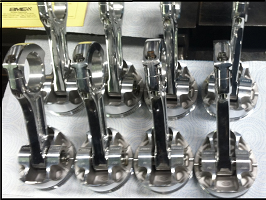


Welcome to the internet home of ClutchTamer, we are changing the game on choosing a clutch!



Welcome to the internet home of ClutchTamer, we are changing the game on choosing a clutch!
Is your car hard to launch consistently? In the past, a stick car had to hit the tires harder than an automatic to get controlled spin, which an automatic car does not need. The only purpose of that controlled spin was to get rpm up quicker so the engine could make more power, sort of like how converter slip helps an automatic car make more power. But the downside was that hitting the tires hard enough to make them spin made the manual more likely to break parts.
Adding a clutch slip device like the ClutchTamer fixes that for the manual. Now the manual doesn't need the extra low 1st gear and controlled spin to get rpm up where the engine makes power. And without the instant torque multiplication from a torque converter to deal with, the initial hit is actually softer than the automatic but it lasts longer. Add to that the fact that a slip controlled clutch can get that softer launch at a much higher rpm than an automatic. Launch rpm is basically stored energy, and the engine has to make the energy that it takes to spin up that rotating assy. A slip controlled manual allows spinning it up much higher prior to the start, which makes more power available to accelerate the car when the clocks are running. Much like raising stall speed can make an automatic car quicker/faster and more consistent, controlled slipping of a clutch can make your car quicker/faster, more consistent, and far less likely to break drivetrain parts!
ClutchTamer use in those classes had been somewhat of a secret for a few years, but with the recent press release the cat's now out of the bag. Back in 2015, last year's season champ Jacob Lamb was the first Coyote Stock racer to secretly experiment with the ClutchTamer (he labeled the delay knob "HOOD" to make it look like a hood release). Factory Stock racer Dan Ryntz ran an automatic in 2017, but for 2018 he switched to a manual trans with the clutch controlled by a ClutchTamer. So far the results are that he has won 4 out of 5 events in 2018, and was runner-up in the only event he did not win! Last 3 races alone he has took home checks totaling $14,700, also locked up the 2018 season championship with one event left on the schedule! Charlie Booze Jr won the Coyote Stock side of last weeks event, and both these ClutchTamer customers went on to win against the NMCA at the 2018 NMRA/NMCA Super Bowl Showdown!
Coyote Stock's sister sealed engine class in the NMRA, "Chevrolet Performance Stock" (CPS), has nearly identical rules for their manual trans cars, but so far their rules have not specifically addressed use of the ClutchTamer. We do know of CPS racers that are currently using the ClutchTamer.
The UMTR (United Manual Transmission Racers) still does not allow the ClutchTamer. A few years ago we sent an early version to a UMTR racer for evaluation. He asked tech if he could use such a device, but was told it would NOT be allowed. Seems it's because UMTR believes the ClutchTamer could be used as a delay device.
The BC Super Shifters rule book does allow "approved damping systems" for non-SoftLoc clutches and clutchless transmissions, but no adjustment is allowed after the burnout box.
The Rocky Mountain Stick Shifters rules now specifically allow the ClutchTamer.
Tired of switching your Soft-Loc style clutch back and forth between "street" and "strip" settings? We've got a fix that's quite a bit easier on the transmission, especially if you are shifting it clutchless.
The fix involves removing all the clutch counterweights, adding enough clutch base pressure to control clutch slippage in high gear, then using a slip device like our ClutchTamer to dial in the hit at the track. This enables you run your "race" clutch settings on the street/highway, with no more worries about low rpm clutch slipping when you get into the throttle during casual driving. As a bonus, you will also be able dial in the "hit" of your clutch right from your driver's seat.
This setup actually performs even better at the track. With conventional slipper clutch tuning using counterweight, you are always trying to balance having enough clamp to hold in hi gear against getting the clutch to slip enough during launch. Those two things have always been tied together in the past, but adding a slip device effectively separates them. By ditching the counterweight and adding a slip device to control the hit, you can get that soft launch at a much higher rpm while still having enough clutch to hold in high gear. Launch rpm is basically stored energy, and the engine has to make the energy that it takes to spin up that rotating assy. It's better to spin it up prior to the start, which makes more power available to accelerate the car when the clocks are running. If you try that with a conventional slipper clutch, the centrifugal assist will hit too hard and that added launch rpm energy just gets wasted in excessive wheel spin or broken parts.
If you are shifting clutchless, switching to this setup will get you much softer shifts than what you have now. Conventional slipper clutch clamp pressure is much higher at the shift point, as that centrifugal assist is hitting the input shaft much harder than it needs to (on cars with data recorders, that shows up as an instant wheelspeed spike just after a clutchless shift). A softer hit after the shift results in less energy being wasted as instant wheelspin, making more energy available to accelerate the car.
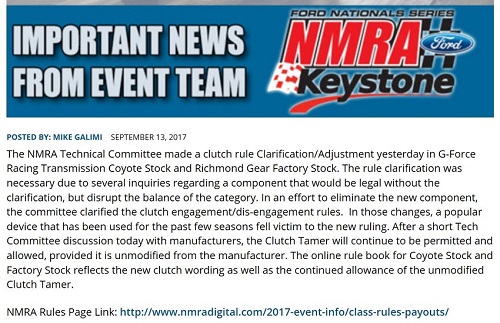 NMRA Coyote Stock / Factory Stock Rules Update- The ClutchTamer is now specifically legal for use in both Coyote Stock and Factory Stock.
NMRA Coyote Stock / Factory Stock Rules Update- The ClutchTamer is now specifically legal for use in both Coyote Stock and Factory Stock.
At right, you will see a copy of the NMRA's rules clarification release concerning manual trans clutch controls for both Coyote Stock and Factory Stock classes.
2023 UPDATE- UMTR NOW ALLOWS USING THE 'TAMER!!!
Most of our ClutchTamer customers are racers who would rather "fly under the radar" to maintain a competitive edge, but once in a while we get a customer that's willing to share their ClutchTamer experience...
While the VP racing fuels fed Gen 2 Coyote engine must remain un-touched, there's plenty of other parts that are fair game and a JLT Performance cold air intake was added in conjunction with an American Racing Headers manifold and MagnaFlow exhaust.
The G-Force G101-A transmission backing the engine is the same that most other racers in the class use, however, Stewart knows the clutch is the key factor in his success.
"We use a Fidanza 6 puck organic disc that's actually a street clutch, but the ClutchTamer device makes it good for racing and we can get a whole season out of it"
Clair Stewart II
His goal was to complete the 2016 Drag Week, but his '56 Chev had a problem...it's Hays Dragon Claw dual disc clutch had the holding power needed for his Hilborn EFI injected 565 BBC, but that holding power was hitting his G-Force GF5R transmission so hard it was ripping the teeth off his Dana 60 gearsets in just a few passes. A couple days before he was scheduled to leave for the first race in Columbus, Andrew decided to try the ClutchTamer.
Shortly after completing Drag Week with no broken drivetrain parts and a 2nd place finish, An extremely happy Andrew called to let us know that our ClutchTamer had saved his Dragweek!
Here's the link...
Hi Grant,
We purchased a ClutchTamer from you about a month ago and have since got it installed and to the track. I know from personal experience that not many people tend to leave good reviews; just bad ones. But I wanted to get back to you and just say “WOW!”. What a cool and simple device. We will be putting one in every manual car we race from now on. I honestly wish we had heard about this sooner. Again, great product and we will definitely be purchasing more.
Micah Doban | OST Dyno
Here's some feedback I got from NMRA Coyote Stock champ Jacob Lamb, his car is pictured on the right >>>...
Jacob Lamb
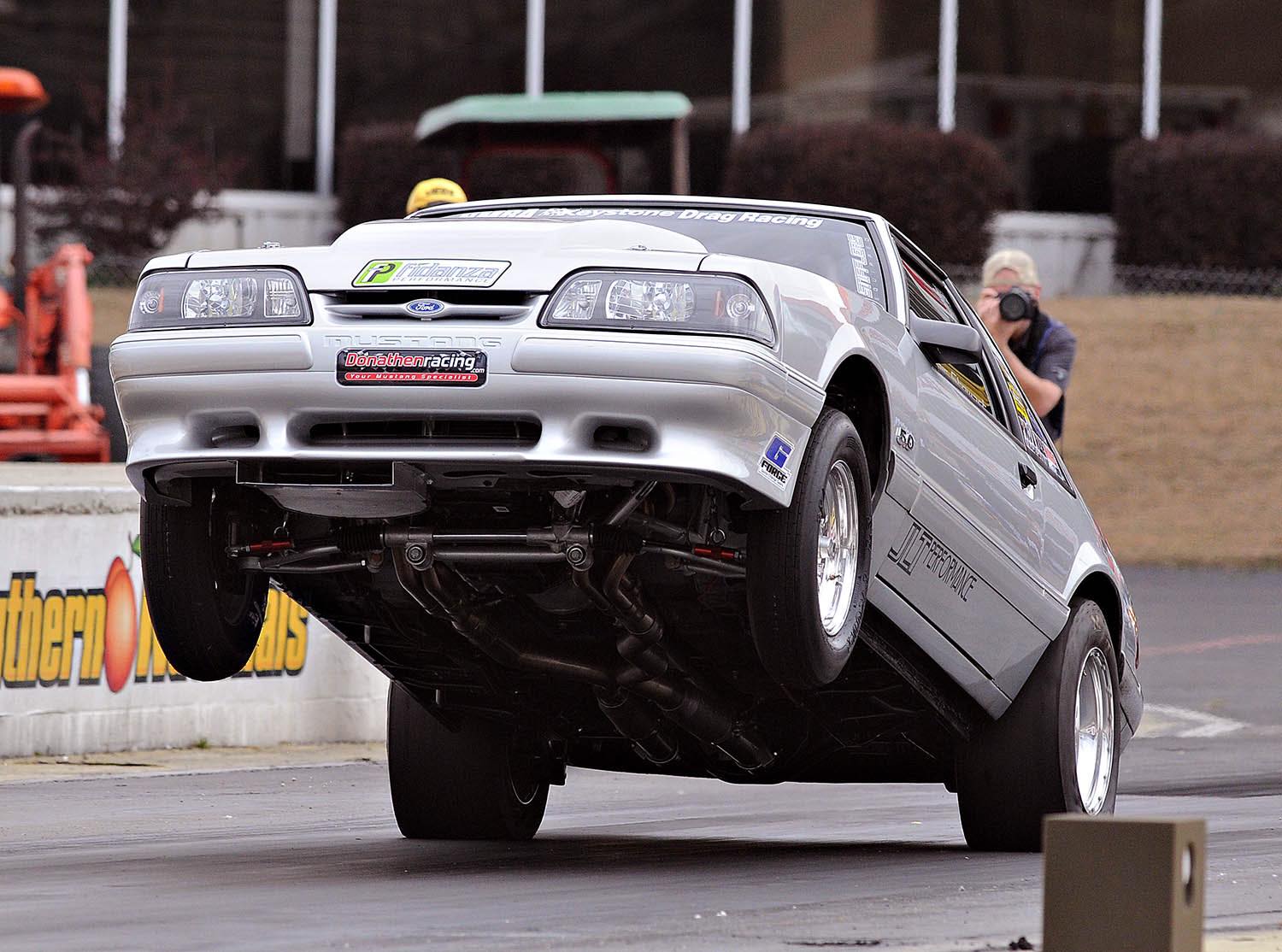 Here's a quote from a Dragzine article about hard working NMRA Coyote Stock Champ Clair Stewart III...
Here's a quote from a Dragzine article about hard working NMRA Coyote Stock Champ Clair Stewart III...
NMRA Coyote Stock
ClutchTamer customer since 2017
 Here's a link to a Drag Week article written by Andrew Starr, Hilborn's EFI injection specialist.
Here's a link to a Drag Week article written by Andrew Starr, Hilborn's EFI injection specialist.
a recap of the 2016 Hot Rod Drag Week experience by Hilborn’s EFI Specialist Andrew Starr
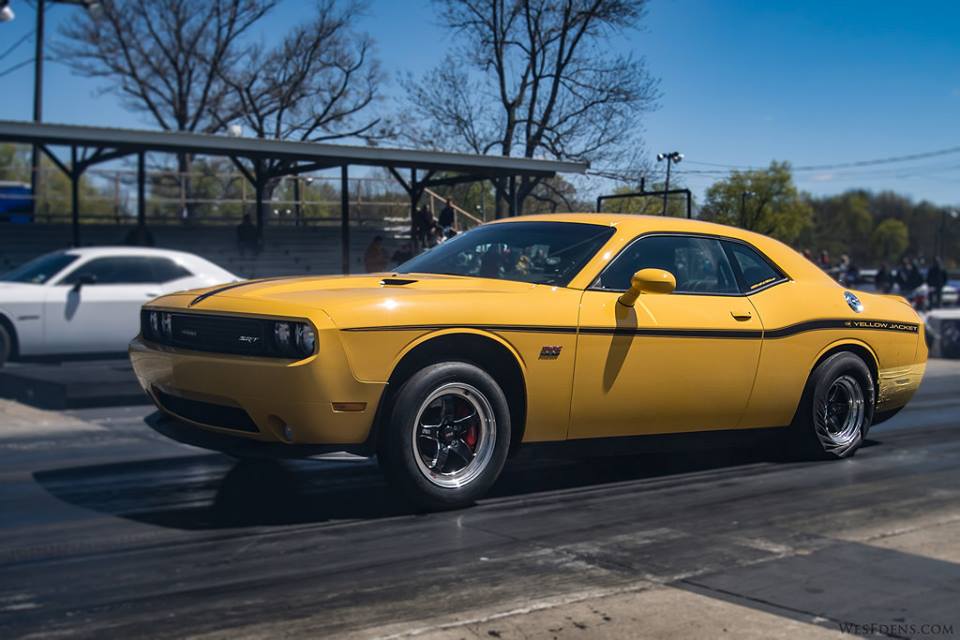 OST Dyno's Micah Doban sent us some ClutchTamer feedback from one of their turbo builds that had finally made it to the track. The IRS equipped 2012 Challenger features a rear mount and he had concerns about keeping the IRS healthy while trying to launch the 1000+ rwhp full weight Challenger at the dragstrip. This is the very first Gen 3 Hemi 6SPD car to go 9’s and is currently the only single power adder car to do so. Best pass was 9.88 in the heat. The car had more in it but it was time to return it to the customer. Here's a link to an article on the car from BangShift.com... OST Dyno 1000hp 2012 Challenger build
OST Dyno's Micah Doban sent us some ClutchTamer feedback from one of their turbo builds that had finally made it to the track. The IRS equipped 2012 Challenger features a rear mount and he had concerns about keeping the IRS healthy while trying to launch the 1000+ rwhp full weight Challenger at the dragstrip. This is the very first Gen 3 Hemi 6SPD car to go 9’s and is currently the only single power adder car to do so. Best pass was 9.88 in the heat. The car had more in it but it was time to return it to the customer. Here's a link to an article on the car from BangShift.com... OST Dyno 1000hp 2012 Challenger build
ClutchTamer customer since 2016

"I've got a friend that has a Black Magic Clutch and he spent thousands trying to get it to work.
I told him to put your 'tamer on the car and give me 3 passes and I would guarantee to get him down the track.
The first pass was the fastest he had made in 3 years. He was a believer after that."
NMRA Coyote Stock
ClutchTamer customer since 2015
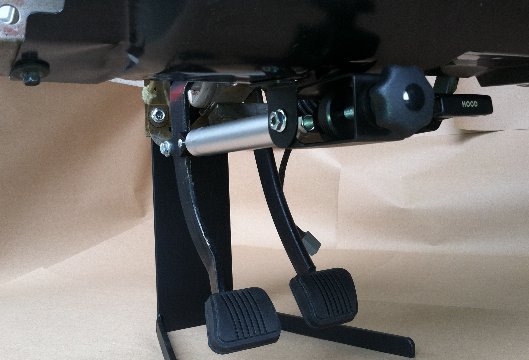 ...A small hydraulic cylinder that takes much of the inconsistent human element out of precisely controlling your car's clutch pedal. It's adjustable for exactly where in the clutch pedal's travel that it becomes active, and adjustable for rate of release from that point on. The cylinder has characteristics similar to those of a 90/10 shock, pulling it's rod out is easy, only the return stroke of the cylinder is controlled. Because the ClutchTamer attaches to the clutch pedal itself, it works equally well on both hydraulic and mechanical clutch release systems/linkage.
...A small hydraulic cylinder that takes much of the inconsistent human element out of precisely controlling your car's clutch pedal. It's adjustable for exactly where in the clutch pedal's travel that it becomes active, and adjustable for rate of release from that point on. The cylinder has characteristics similar to those of a 90/10 shock, pulling it's rod out is easy, only the return stroke of the cylinder is controlled. Because the ClutchTamer attaches to the clutch pedal itself, it works equally well on both hydraulic and mechanical clutch release systems/linkage.
With our ClutchTamer installed, only the final part of clutch pedal's release is slowed down, not the whole release cycle, while the rest of the clutch pedal's travel works like normal. If you are using the clutch pedal during shifts, the slipper will soften drivetrain shock during the gear changes as well. Casual driving is NOT affected, no need to dis-connect the ClutchTamer for daily driving.
The Clutch Tamer slip controller allows you to choose a clutch with more capacity than you would normally choose. Typically that clutch would be too aggressive, but the addition of the first stage of the slip control provides the ability to apply only partial pressure initially, allowing slip. The second stage allows additional pressure to come in over time to insure lockup farther down the track.
The most surprising thing that you will realize with the ClutchTamer is how much more power you will be able to put down without breaking parts!
On the right is pictured an installed Universal Underdash version of the ClutchTamer. It features independently rotating mounting tabs on each side of the dash bracket, popular with the Muscle Car customers that doesn't want to modify their mint original dash.
Below is our "Universal Underdash" version of the ClutchTamer installed on a typical lower dash/pedal assembly. Attaching the dash bracket requires drilling (4) 1/4" holes, but the pedal bracket installs by simply sliding onto the pedal and securing with a clamp bolt.
We also have versions that install thru the dash for a more integrated look.
Also available are both star shaped and bar style knobs.
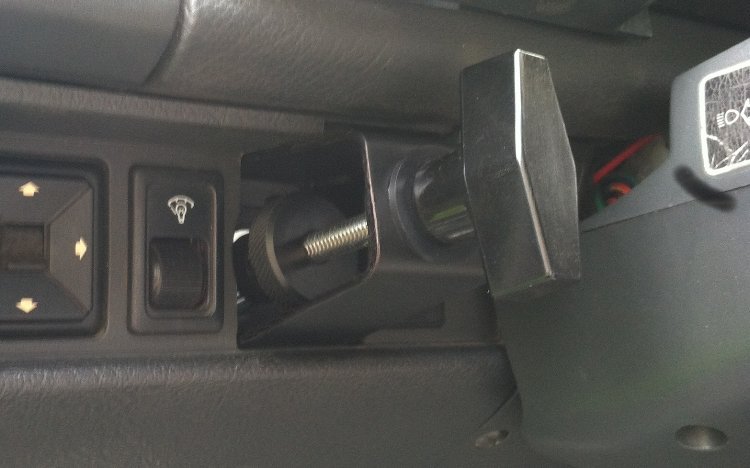 ...As the clutch pedal is depressed, it pulls the rod out of the attached ClutchTamer's cylinder. When the clutch pedal is released the pedal then returns completely unrestricted, until the point that the "initial hit" dial on the cylinder's extended rod contacts the dash bracket. From that point on, the rate of clutch pedal release is controlled by an adjustable orifice inside the cylinder. As the rod slowly retracts back into the cylinder, the rate of retraction is adjusted by simply spinning the cylinder's shaft "inward" (clockwise). We attach a knob to the end of the shaft to make the adjustment quick and easy.
...As the clutch pedal is depressed, it pulls the rod out of the attached ClutchTamer's cylinder. When the clutch pedal is released the pedal then returns completely unrestricted, until the point that the "initial hit" dial on the cylinder's extended rod contacts the dash bracket. From that point on, the rate of clutch pedal release is controlled by an adjustable orifice inside the cylinder. As the rod slowly retracts back into the cylinder, the rate of retraction is adjusted by simply spinning the cylinder's shaft "inward" (clockwise). We attach a knob to the end of the shaft to make the adjustment quick and easy.
We use a simple dial type adjustment with an internal detent that is typically located within easy reach of the driver's seat. You can dial in more/less "initial hit" of the clutch without even unbuckling your belts! Here's a pic of the dash adjuster dial assembly. It features a notch milled into the threaded rod, while the inner "Initial Hit" dial uses a steel ball style detent that's pre-loaded with a simple o-ring to keep the dial from free spinning. We now have a sliding detent feature for the "delay" setting as well, insuring that the delay setting does not wander over time...
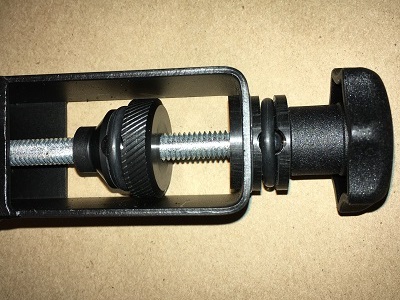
The below graphs show "Psi" data recorded from a hydraulic throwout bearing, while using one of our ClutchTamer cylinders to control the release of the clutch pedal.
...The 1st graph below shows a range of incrementally increasing amounts of "initial hit" (controlled by the ClutchTamer's inner "initial hit" dial), basically giving you the ability to instantly release the clutch pedal to a precise point in the pedal's travel. This is important because it gives you the ability to temporarily withhold or "dial out" excess clutch clamp pressure, which would otherwise pull the engine down and cause a bog.
...The 2nd graph below shows a secondary range of pedal release rates (controlled by the ClutchTamer's outer "delay" knob). This gives you the ability to precisely and independantly control the clutch pedal's travel rate beyond the "initial hit" point, which is important because it gives you the ability to separately control how long the clutch slips...
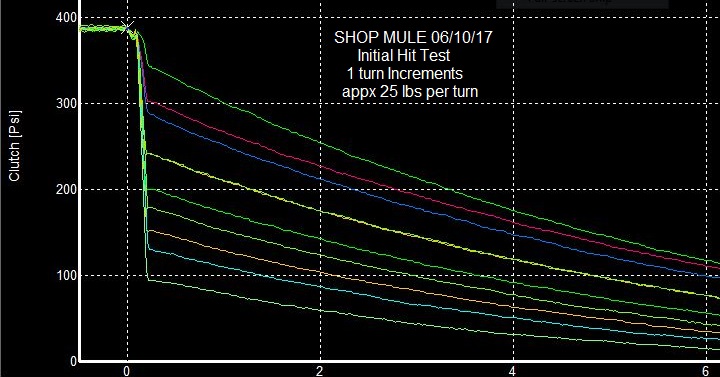 ...
...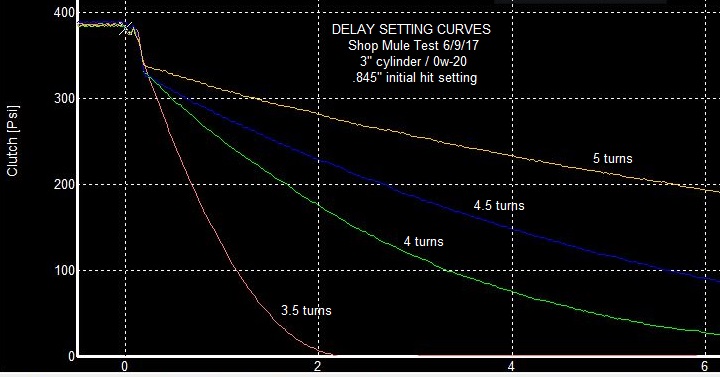
The ClutchTamer is a very effective tool for eliminating a dead-hook bog. Adding air pressure and adjusting the chassis to gain wheelspeed can be effective if you run bias slicks, but you will be basing your consistency on a huge variable. How do you predict how far down the track you are going to spin your tires? You might get it right on occasion, but track temps, starting line condition, or even a change of lanes can throw your game off. Bogging or spinning with an occasional perfect run in-between, it's no wonder guys get frustrated to the point of switching to an automatic. Our solution of dead hooking combined with controlled clutch slip is an option that can be much more predictable.
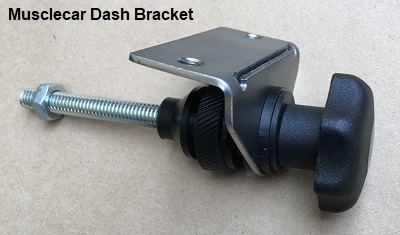
Pictured above is our NEW Muscle Car Style Universal Dash Bracket, which is included in our ClutchTamer Muscle Car Kit. This single tab dash bracket's small size looks a lot like an underdash "choke" or "vent" knob, as our sliding detents are hidden behind the bracket. The attachment holes are 1/4" on a 2" spacing. The bracket's "bend line" is partially severed, making it easy to adjust the angle of the bend for ideal geometry. This makes it possible for the bracket to adapt to a wide range of vehicles, especially those with metal dashes. After the install geometry is finalized, the bracket is removed and the severed bend line angle is then locked in by filling the severed line with a weld bead. If the customer does not have a way to fill in the line themselves and are in a hurry, a local muffler shop should be able to do it for a small fee. If the customer is not in a hurry, they can send it to us and we will do it for free. After welding/painting, our Delrin slide/detent bushing can be snapped into the bracket for final assembly. You can specify either a 3" or 4" cylinder stroke length, custom stroke lengths also available for no extra charge.
CURRENT PRICING...
ClutchTamer Muscle Car Kit (dash bracket assy pictured above)……...$239
'79-'93 Mustang below-dash 2" offset E-Z install ClutchTamer...…........$239
Application specific '87-'89 Mustang in-dash ClutchTamer...……...........$239
Application specific '90-'93 Mustang in-dash ClutchTamer......…...........$239
Application specific '94-'04 Mustang in-dash ClutchTamer...……...........$239
Application specific '86-'91 Mazda FC RX-7 in-dash ClutchTamer….....$289
Universal Under-Dash ClutchTamer w/ rotating mount tabs.....…..........$239
COMING SOON!!! More application specific dash and clutch pedal brackets to make your installation a snap!
NEW! ClutchTamer Universal Version Install Guide.....(fabrication required)
NEW! ClutchTamer Musclecar Version Install Guide...(fabrication required)
NEW! ClutchTamer '79-'93 Mustang Install Guide….....(under dash version)
NEW! ClutchTamer '87-'89 Mustang Install Guide...…........(in-dash version)
NEW! ClutchTamer '90-'93 Mustang Install Guide...…........(in-dash version)
NEW! ClutchTamer '94-'04 SN95 Mustang Install Guide…..(in-dash version)

Our "Shop Mule" doing some early ClutchTamer development work on radials.
If you have any questions or would like to place an order, click here to e-mail us or call 360-391-1208
At first, purposely slipping the clutch to go faster may sound like a crazy idea. Slipping a clutch waaay too much IS crazy...too much heat, too much wear, and a ton of added maintenance. On the other hand a clutch that does not slip enough will either bog your engine or blow your tires off, while killing both your ET and your drivetrain. But somewhere between those two extremes, you will find a sweet compromise spot with a perfect amount of clutch slipping that will maximize your engine's power production into a tighter time frame, to produce a much quicker ET.
How is it possible for a less efficient mechanical coupling (slipping clutch) to increase your engine's power production? Here's a simplified example- lets say a car has the power to gain speed at an average rate of 6000 rpm per second in 1st gear. Let's also have the clutch slipping until 0.5 sec into the run with the tires remaining dead hooked (i like radials). If the car launches at 6000 and the tires are stuck, that clutch will pull engine rpm down to 3000 by the 0.5 sec mark. Rpm then begins climbing from 3000 as it recovers lost rpm, to 6000 rpm by the 1.0 second mark. During the initial 1 second after launch, the engine's average rpm was 4500, which means the engine made 75 revolutions over that 1st second of the run.
...Now repeat the launch, but with the clutch slipping just enough that the engine does not lose any rpm at all over that same 1 sec period. Now the engine's average rpm has increased to 6000, which means it made 100 revolutions during that same initial 1 second period.
...The launch that didn't lose any rpm actually packs 33% more revolutions of WOT power production into the same 1 second time period. If the clutch also slips just right after the shifts, you can pick up a little power production there as well. You might lose a little of that 33% gain due to increased slipping, but there’s a lot left over to make the car faster. Balancing a small loss of mechanical efficiency against a 33% increase in power production can result in a HUGE net gain! When you see a clutch car make a pass with a seemingly unreal quick 60' and ET as compared to their MPH (the fast Coyote Stock guys are a good example), this is a big part of what makes those amazing passes possible.
The benefit comes from raising the engine's average rpm over the duration of the run, basically narrowing the engine's operating band by elevating the lower areas of it's rpm trace. It all boils down to adding power at a faster rate than any related loss of efficiency. It's the same concept that makes it possible for the automatic guys to install a "less efficient" converter with a higher slip ratio, but yet still produce a faster run.
Ideally, the clutch's holding power should be matched to the power that the engine is making. Let's say an engine makes 500 ft/lbs and the clutch attached to it has a capacity of 700 ft/lbs before it begins to slip. When you launch the car, that clutch is going to draw 700 ft/lbs…the 500 ft/lbs that the engine is making at wot plus another 200 ft/lbs of stored inertia energy that will cause the rotating assy to lose rpm. That extra 200 ft/lbs makes the launch more violent, but as soon engine rpm is drawn down to the point where engine rpm can sync up with wheel speed, rpm ceases to drop and that transfer of an additional 200 ft/lbs of inertia energy stops. What most don't realize is that after you have used that inertia energy and lost the rpm, that spent energy must be paid back in full as the engine recovers the rpm that it lost. That inertia energy transfer which initially made the car launch harder now slows the car, as the transfer reverses and some of the engine's power is then diverted to recharge the spent inertia energy back into the rotating assy. In the end, that temporary 200 ft/lb boost was balanced out by a loss, meaning you did not actually net any performance gain overall, even though the car did initially launch harder.

Why borrow that extra 200 ft/lbs to produce an artificially hard launch when it might be ENOUGH TO BREAK SOMETHING!!!
Raising your staging rpm to minimize a bog basically works by packing more inertia energy into your rotating assy, which in turn forces your clutch to slip longer before it can grab, which means your car will travel farther down the track before the engine rpm and wheel speed can sync…that’s the point where the clutch actually locks up 1:1. Because the clutch slips to a point farther down the track where the car is traveling faster, engine rpm does not have to drop as low to achieve clutch lock up. In other words, the car bogs less. Still bogs though, just not as bad. Think about that for a minute though…adding MORE inertia energy to the launch...which in turn forces the clutch to slip longer against it’s maximum clamp pressure...you are basically packing more energy into the rotating assembly for the sole purpose of forcing MORE abuse on your clutch! Not only does this add a lot of un-necessary heat and wear to the clutch assy, it also makes the launch more violent than it needs to be.
 Our ClutchTamer is basically an easily adjustable way to temporarily hold back some of the clutch's clamp pressure at the throwout bearing. This hydraulically timed event reduces the clutch's initial torque capacity, slowing the application of clutch clamp pressure just long enough to keep the engine from being pulled down/out of it's power range. The clutch still has all it's original power holding capability, but now the initial hit of the clutch can be matched to the engine's power to minimize any loss of rpm during launch. Unlike throwing extra inertia energy into the clutch assembly to force it to slip longer at maximum clamp pressure, our method gets the needed amount of clutch slip with much less wasted energy. The ClutchTamer also works great for cars that spray, as it allows choosing a clutch with enough clamp pressure to handle the spray, but allows you to dial back the initial clamp pressure as needed to prevent bogging the engine when it's running without the bottle. The clutch still slips as needed, but now it slips against much less average clamp pressure so it‘s surfaces remain cooler and wear less. The engine no longer has to lose rpm to force the clutch to slip during launch, the chassis no longer has to deal with an artificially hard launch hit due to inertia energy, and the engine won’t have to pay that spent inertia energy back. This makes it possible to cut the whole give/take of rotating assy inertia right out of the launch loop all together, for a smoother, less violent, and more efficient launch! No longer do the tires have to spin to minimize the bog, less tire and clutch wear is just icing on the cake.
Our ClutchTamer is basically an easily adjustable way to temporarily hold back some of the clutch's clamp pressure at the throwout bearing. This hydraulically timed event reduces the clutch's initial torque capacity, slowing the application of clutch clamp pressure just long enough to keep the engine from being pulled down/out of it's power range. The clutch still has all it's original power holding capability, but now the initial hit of the clutch can be matched to the engine's power to minimize any loss of rpm during launch. Unlike throwing extra inertia energy into the clutch assembly to force it to slip longer at maximum clamp pressure, our method gets the needed amount of clutch slip with much less wasted energy. The ClutchTamer also works great for cars that spray, as it allows choosing a clutch with enough clamp pressure to handle the spray, but allows you to dial back the initial clamp pressure as needed to prevent bogging the engine when it's running without the bottle. The clutch still slips as needed, but now it slips against much less average clamp pressure so it‘s surfaces remain cooler and wear less. The engine no longer has to lose rpm to force the clutch to slip during launch, the chassis no longer has to deal with an artificially hard launch hit due to inertia energy, and the engine won’t have to pay that spent inertia energy back. This makes it possible to cut the whole give/take of rotating assy inertia right out of the launch loop all together, for a smoother, less violent, and more efficient launch! No longer do the tires have to spin to minimize the bog, less tire and clutch wear is just icing on the cake.
Having problems with spooling a turbo quickly without resorting to a 2 step? Using clutch slip to raise your engine's average rpm can dramatically increase your engine's airflow over that critical first second after a launch. With our ClutchTamer, you can improve your 60' without all the added drama of first getting up on the 2 step and then bumping into the beams.
Our ClutchTamers have been installed on a wide variety of vehicles with great success. Old/new Camaros/Mustangs/Challengers/GTOs, Novas and Chevelles, Tri 5 Chevys and Corvettes, BMWs and Mitsubishi, Hondas and Toyotas, Nissans and VWs, Miatas and RX-7s, Neons and Lancias. Everything from '30's cars to modern trucks, from stock naturally aspirated engines to nitrous/supercharger/turbos, from stock single disc organic to dual/triple disc, from organic/kevlar/ceramic/metallic and even carbon/carbon. To a point, every car/truck generally gets quicker every time you add a little more clutch slip. Our ClutchTamer makes experimenting with clutch slip very easy- want a softer clutch hit?…just reach down and dial some out in seconds. Clutch not hitting hard enough? Dialing some hit back in is just as easy, and you can do it right from the driver's seat.
'68-'72 Chevelle / GTO...
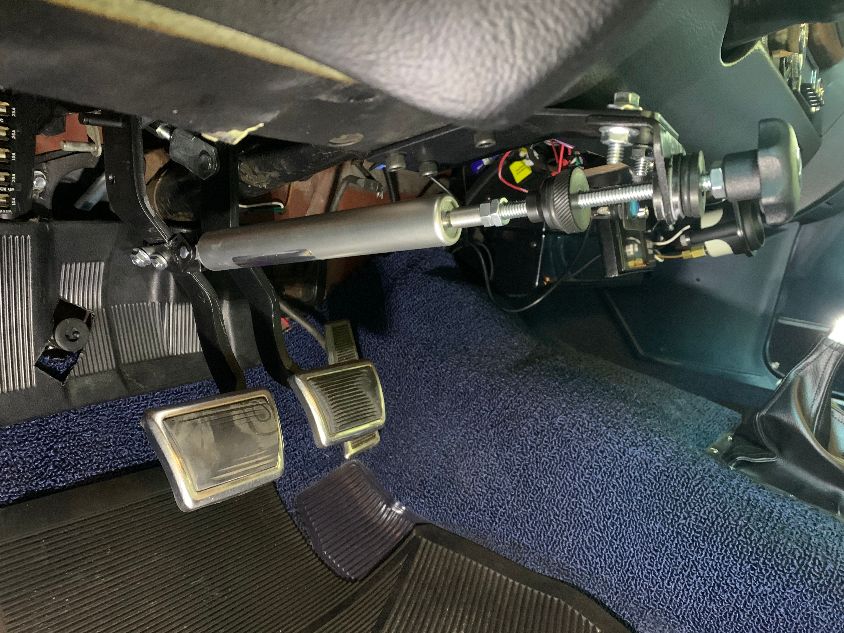
FOX Mustang...

Ford Thunderbird...
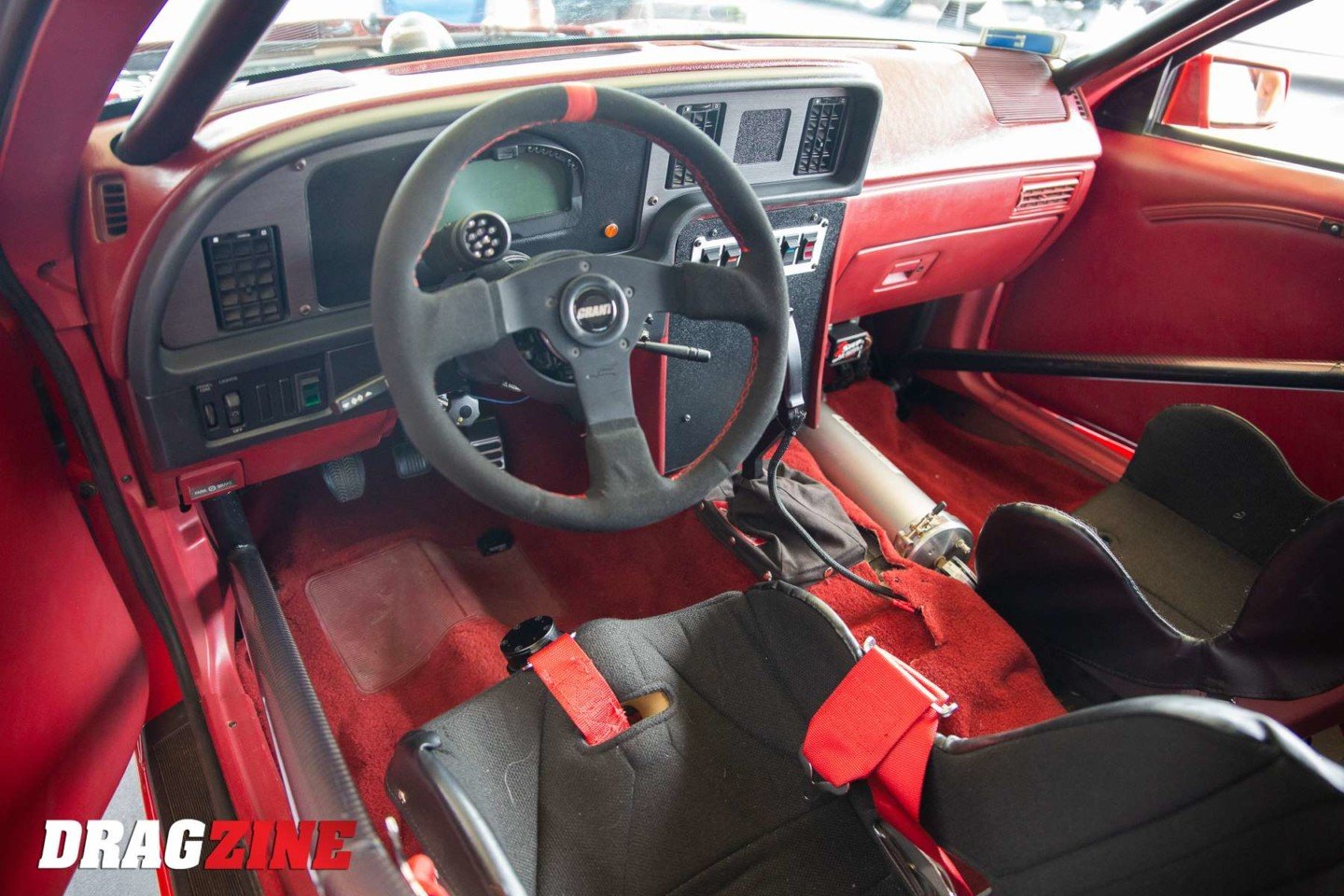
'79-'85 Mazda RX-7...
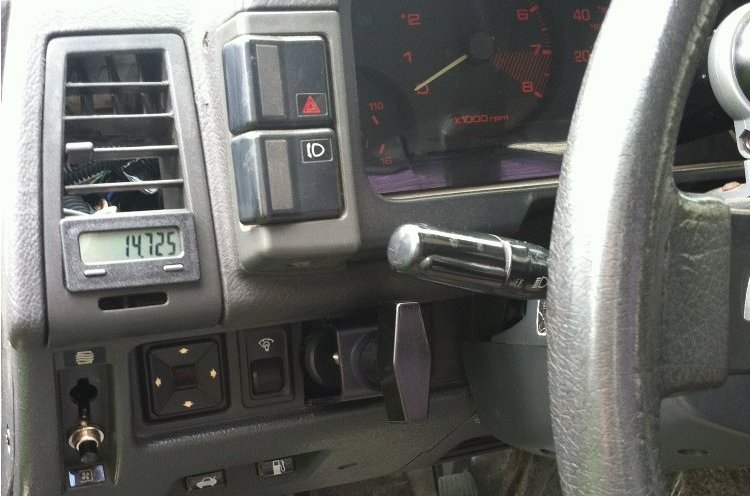
2015 Ford Mustang...
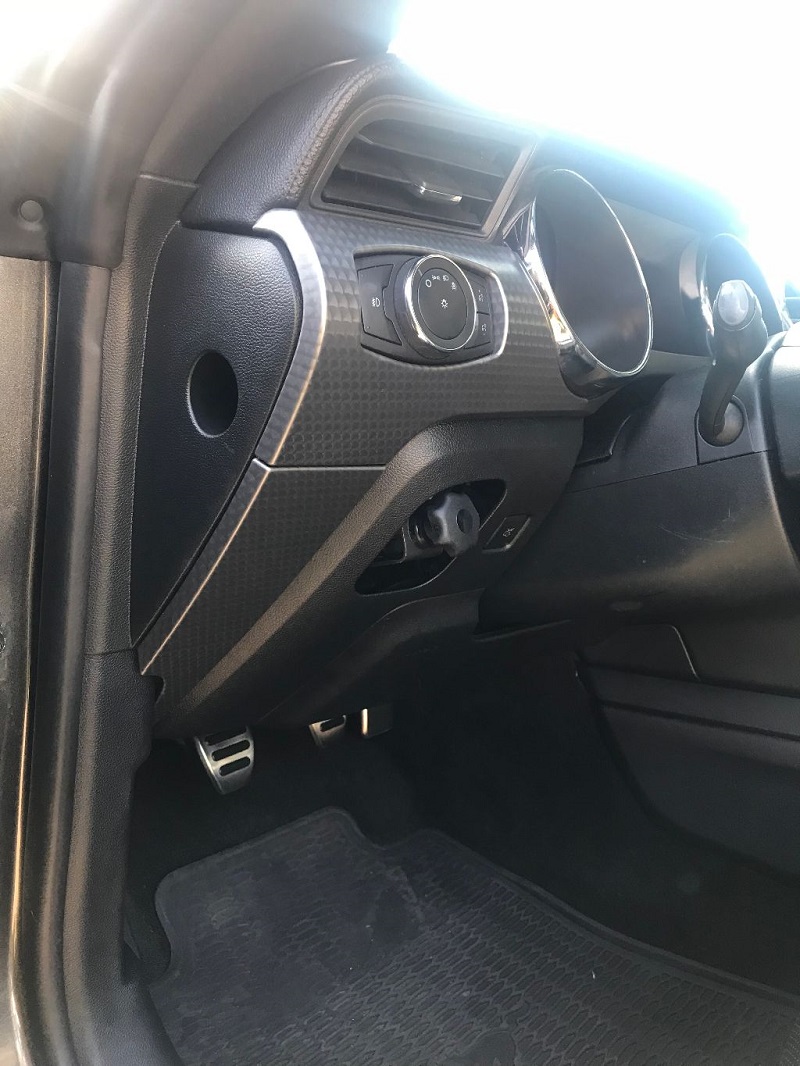
VW Beetle...
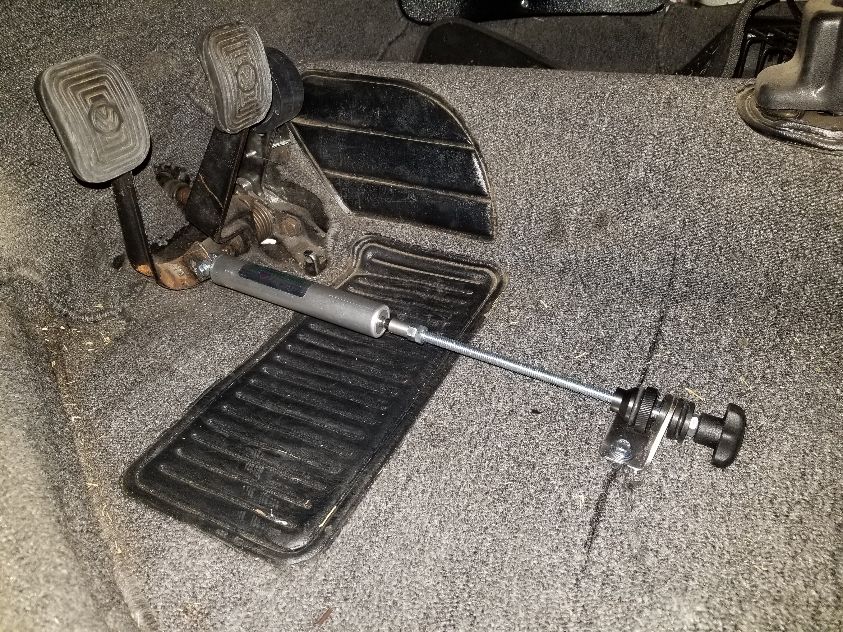
Chevelle...
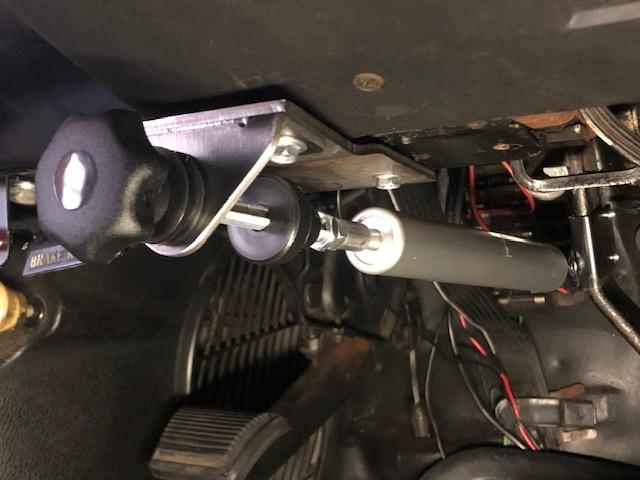
Musclecar version...

Fox Mustang Underdash Version...
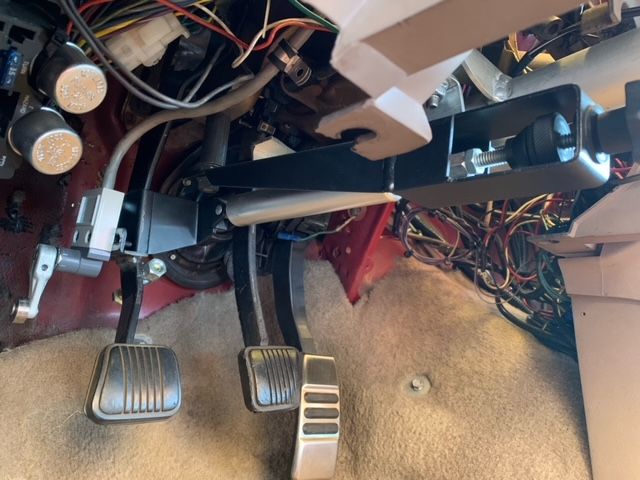
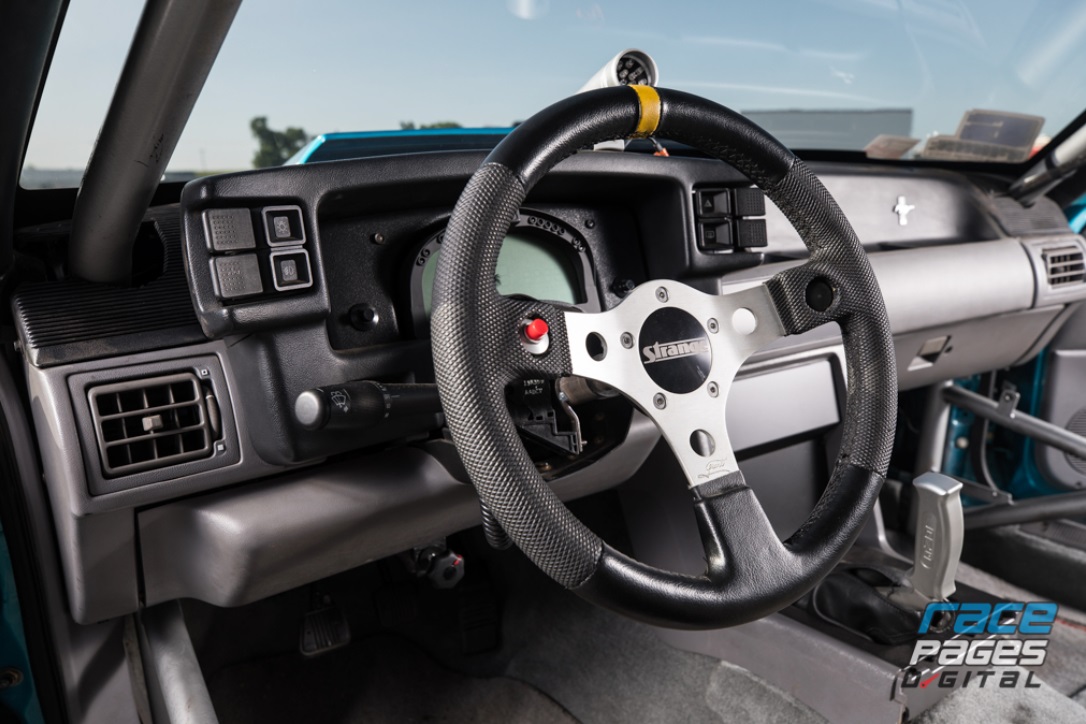
What's the key to Drag Radial consistency behind a manual transmission? conventional wisdom says you need a couple rotations of the tire off the line, as that's the traditional way to launch a stick car on slicks with a minimum amount of bog. Because the engine does not typically make enough torque to break the tires loose on it’s own, it needs help from a hard hitting clutch to release additional inertia energy from the engine’s rotating assy to get the tires turning. It's the release of that extra energy that causes the engine to lose rpm just before the tires begin to spin. When the tires begin to spin the clutch no longer has to slip, basically trading less wear/tear on the clutch for more wear/tear on the tires. It’s been that way for more than 50 years now, but that’s beginning to change. We now have radials which are a much more efficient tire. Just the simple fact that switching from slicks to radials will gain you some mph, that fact alone tells you the slicks consume more power. Problem is, you can’t just bolt a set of radials on a traditional stick/slick setup and get all the benefits. The radials just won’t tolerate the violent hit or the wheel spin that the slicks needed to work effectively. If we eliminate the overly violent hit and excessive wheel spin, it becomes much easier to reap the benefits of radials. Temporarily holding back some clutch clamp pressure is the key to making radials work.
To exploit the benefits of a radial, you basically have a line that you don't want to cross when it comes to shocking the tire. Anything you can do to smooth out your power delivery profile is going to make it easier to operate closer to that line. Any torque peaks that you have in your power delivery need to be shaved down, which basically allows you to elevate the average amount of power you can deliver to the tire...make sense? A diaphragm PP combined with a ClutchTamer makes it possible to put together a slipper clutch that has a more diagonal/linear rpm drop trace than the typical centrifugal. This softer engagement in the instant just after the shift helps keep those radial tires stuck.
M/T's 275 radial is an amazing tire. There are cars pulling 1.1 60's running 7 second 1/4mi times on those tires. So why does bolting that same tire onto a typical 10 second stick car lead to so much frustration? Most don't realize just how violent the launch of a lower power stick car can be. As an example, let's assume a stick car has power for 1.50 60's, but has a grabby clutch that has a capacity of 800 ft/lbs before it begins to slip. When you launch that car, the clutch is going to draw 800 ft/lbs, and the engine does not have to make 800 ft/lbs to make this possible. That clutch will draw all the torque that the engine is making at wot, then it will draw the balance of the 800 ft/lbs from stored inertia energy which will cause the rotating assy to lose rpm. Once again, that added inertia energy makes the launch much more violent than it needs to be. But remember as soon as engine rpm is drawn down to the point where engine rpm can sync up with vehicle speed, rpm no longer drops and the transfer of additional inertia energy stops. The downside to launching the car with inertia energy is that once the inertia energy is spent and the rpm lost, then that spent energy gets repaid while the engine recovers the lost rpm. That inertia energy transfer which initially made the car launch harder now slows the car, while that lost rpm and spent inertia gets repaid. In the end, using inertia energy to launch harder does not actually net you any performance gain!
Understanding that, now let's compare that 1.5 60' car with a grabby clutch, to a car that has power for 1.1 second 60's but does not lose rpm when it launches. If that 1.1 60' car does not lose rpm during launch, that indicates no inertia energy was used and it launched on engine power alone...
The 1.5 60' car averages 4648 lbs of thrust over the initial 60', but remember that the clutch in Car #1 draws 800 ft/lbs of energy before it begins to slip. Multiply that 800 ft/lbs by it's 1st gear ratio (3.35 for example), rear gear ratio (perhaps 4.30), factor in some drive train loss (13% sounds good) and the 28” tire’s lever moment at the contact patch, that 1.5 second 60' car easily matches the 8600 lb thrust of the 1.1 60' car during that very short period of time before the clutch locks up! That initial spike to 8600 lbs of thrust before the clutch locked up is then offset by a reduction of thrust, now below the average while the lost rpm is recovered. Even though thrust peaked at around 8600 lbs briefly, it's still just a 1.5 60' car. Add in pressure fluctuations at the contact patch from that violent hit on the chassis, it’s easy to see how a lower power car can easily upset a tire that's otherwise capable of amazing 1.1 second 60’s.
The ClutchTamer makes it possible to temporarily reduce that 800 ft/lb clutch in car #1 to around 500 ft/lbs. Now it's tires only see a peak of around 5400 lbs of thrust instead of 8600 lbs in that brief period before the clutch locks up. Not only does the drivetrain see less abuse, but the engine does not lose as many rpm after launch and after the shifts...the engine will be pulling from a higher average rpm, which equals increased power production over a given distance. It might be hard to believe, but even though there is less stress on the drivetrain, the car will actually be quicker and much less likely to break the tires loose even with an un-sorted chassis.
Are you a NMRA racer shimming your diaphragm PP to dial in clamp load?
Our ClutchTamer makes it easy for you to momentarily reduce the torque capacity of your clutch to match the power of your engine. This makes it possible to launch the car without ANY loss of engine rpm, which means power delivery will be very smooth without any spikes above your engine's torque output to break parts or knock the tires loose. With our ClutchTamer there is no delay on how quickly your clutch initially hits. Just dial how hard you want the clutch to initially grab to launch the car, then adjust how fast you want additional clutch pressure to come in to avoid blowing thru the clutch. If lockup occurs too early causing the car to bog, simply add lockup delay a little at a time until the bog disappears. It's that simple.
…2800 lb car #1 has power for 1.5 second 60’s (1.66 G‘s), which requires a 60’ average of 4648 lbs of thrust at the tire
…2800 lb car #2 has power for 1.1 second 60’s (3.08 G’s), which requires a 60’ average of 8624 lbs of thrust at the tire
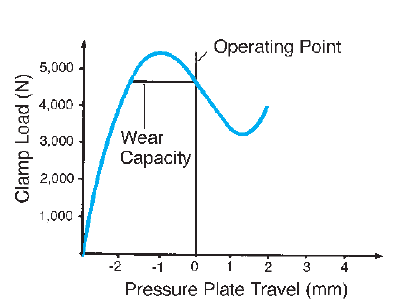 Now it's possible to get enough clutch slip to be competitive while eliminating the hassle of PP shims altogether. The ClutchTamer‘s "initial hit" dial will take over that job of limiting initial clamp load, while it's "secondary delay" setting basically allows more clamp to come in later to insure that you don't blow thru the clutch. This also puts you back on the proper side of the Belleville spring's "pressure curve", which means it will function as designed and actually gain a little clamp pressure over the life of the clutch disc. When you shim a diaphragm to lower the clamp, that puts you starting out at the end of it's wear capacity, resulting in pressure falling pretty quick as the disc wears. The pic below gives an idea how steep that pressure curve is...
Now it's possible to get enough clutch slip to be competitive while eliminating the hassle of PP shims altogether. The ClutchTamer‘s "initial hit" dial will take over that job of limiting initial clamp load, while it's "secondary delay" setting basically allows more clamp to come in later to insure that you don't blow thru the clutch. This also puts you back on the proper side of the Belleville spring's "pressure curve", which means it will function as designed and actually gain a little clamp pressure over the life of the clutch disc. When you shim a diaphragm to lower the clamp, that puts you starting out at the end of it's wear capacity, resulting in pressure falling pretty quick as the disc wears. The pic below gives an idea how steep that pressure curve is...
The lightest clutch assy is not necessarily be the quickest when it comes to exploiting clutch slip to maximum advantage, as the clutch needs to have enough thermal capacity to absorb some slip without overheating/warping. Having plenty of clutch capacity for the task is the 1st requirement, then it's a simple matter of controlling the application of clutch pressure to match engine power. Ultra-lightweight circle track or road racing clutches will likely not be able to tolerate much slipping without permanent damage.
Diaphragm Pressure Plates-...a modern diaphragm style pressure plate actually has a lot going for it, especially for a Street/Strip application. The most noticeable advantage is less pedal pressure per pound of clamp pressure, due in part to less friction at it's pivot points. Beyond that, the diaphragm style spring design gradually gains a little clamp pressure as the disc wears to around the 1/2 way point, then clamp pressure begins to gradually work it's way back down. By the time the clutch disc needs replacement, clamp pressure is about what it was when the disc was new. Because diaphragm clamp pressure varies less over the life of the disc, you can more closely match clamp pressure to the actual application, which minimizes overall pressure required to depress the clutch pedal.
Borg & Beck and Long style pressure plates- any pressure plate that uses coil springs is going to lose clamp pressure from day 1 as the disc wears. Making matters worse, the typical way to increase torque capacity for performance applications is to increase the coil’s spring rate, which only increases the amount of clamp pressure loss over the life of the disc. For this reason you MUST choose a coil spring pressure plate with too much clamp pressure when it's new, so that you will have enough clamp pressure to handle the engine's torque when the disc is worn! Not only does this make the clutch overly aggressive, it also dictates that the clutch pedal will be hardest to depress when the clutch disc is new. The addition of the ClutchTamer addresses the harsh engagement, as it makes it possible to dial back the initial aggressiveness that comes with excessive clamp pressure. Now it's possible to use radial tires without the added maintenance of constantly adding, then removing, shims from the pressure plate (or otherwise manually adjusting spring pressure), to keep clutch clamp pressure in it's sweet spot.
What about pressure plates that feature centrifugal assist?...if you plan WOT shifts at hi rpms- any pressure plate that features any sort of centrifugal assist is going to hit the drivetrain hardest after the shift, making it more likely to break parts or knock the tires loose. Counterweight style clutches produce an RPM drop trace on a graph that looks like a "backwards J" with a hook at the bottom. Their sharp, near vertical drop indicates a quick loss of rpm (intense discharge of inertia energy), which transitions into a gradual "hook" near the bottom as the clutch begins to slip more. That hook area at the bottom of the "J" is where most of an adjustable's slip actually occurs. The intense vertical drop is something you have limited control over, as a centrifugal design dictates that rpm must come down before clamp pressure can be reduced. This is a big reason why SoftLoc style clutches are only marginally effective when trying to run radials, as they still have a relatively intense discharge of inertia energy just after the shift, until rpm comes down enough for the bulk of their slip to occur.
Is it possible that a diaphragm pressure plate, when combined with the ClutchTamer, might actually have potential to outperform a much more expensive "Long Style" adjustable clutch?...the 1st answer comes from a difference in how cars are typically staged. With an adjustable clutch, staging rpm by design has to be lower, with the goal of getting enough initial clutch slip to launch the car. Often called “driving into the clutch”, as the engine gradually gains enough rpm to achieve clutch lockup by about .8 to 1.0 seconds into the run. During this entire .8 to 1.0 second time period, some of the engine’s power is used to accelerate the rotating assembly. The addition of the ClutchTamer makes it possible to raise staging rpm, while still getting the needed clutch slip, effectively reducing the time/energy spent accelerating the rotating assy.
What about using the ClutchTamer with clutchless shifts?...ClutchTamer also makes it easy to add clutch slip after shifts made without using the clutch pedal! In this mode the ClutchTamer slows engagement to the point where a little more clamp pressure is added with each successive shift. Basically makes it possible to slip more after launch, then slip much less after the shift to high gear when you don't need as much. Far softer hit after the shifts than the typical SoftLoc style adjustable clutch, now you can run radials with a clutchless manual transmission without all the headaches.
The ClutchTamer is just a brutally simple way to control a clutch without breaking the bank.
...The 2nd answer comes in what happens in that instant just after a shift. Being rpm based, the adjustable clutch reaches maximum clamp pressure at the shift points. Engine speed must then drop sharply, until rpm is low enough to allow the clutch to slip. With a data logger, this rpm drop will show up on the graph looking much like a backwards “J”. The sharp vertical drop actually indicates an intense discharge of inertia energy (torque spike), which often releases itself as a spike in wheelspeed. The rounded hook at the bottom of the “J” indicates the more gradual transition period from torque spike, to clutch slip, to clutch lockup. With a ClutchTamer in place, rpm drop after a shift using the clutch pedal looks more like a diagonal line from shift to clutch lockup. This spreads the sharp drop in rpm over a longer time period, effectively reducing the intensity of that torque spike after the shift.
...Then there’s a difference for a street/strip car in how easily the clutch transitions from "street” to "strip” modes. With the adjustable clutch, you typically need to be able to crawl under the car, as raising/lowering base pressure is key to making the transition. This usually means tools, jacking up the car, getting dirty and cleaning up. With the ClutchTamer, no need to change a thing for the drive back home. If you do need to make an adjustment, you can do it while sitting in the driver’s seat. If you already have an adjustable clutch, adding the ClutchTamer can make switching street/strip modes much easier.
Q- Recent trip to the track with a stock LS2/T56, 3.54 axle ratio, 4000rpm 2-step clutch dump, 28X9X15 ET Drag slicks @17psi, Lots of VHT with beautiful track prep. Both front wheels up during dead-hook, but engine bogged and dropped the front wheels back down almost instantly. Lowered tire pressure to 15psi and reset 2-step to 4500 with plans to keep increasing 2-step till either I got some tire spin or broke something, but the car ahead of me in staging blew his tranny up and dumped all of its oil all over the track, so I loaded up and headed home. Car performed below par with 1.60 60' times and consistent 7.30s at 96mph, mostly slowed by dead hooking, even bogging the car on gear changes. I may be going back to 26" slicks for this track since they put so much VHT down.
Here's what your mph/rpm would be at different clutch lockup points down the track, assuming 2.97 T56 1st gear, 3.54 diff ratio, no wheelspin, and your car accelerating at a 1.76g rate (1.45 60')...
Just to be clear, the ClutchTamer doesn't make the clutch "slippy", as the intent here is only to delay it's lockup point until your car is going fast enough that clutch lockup won't cause a bog. You still have all the original clamping pressure available to lock up the clutch, just controlling how when and how quickly that pressure is applied. RPM does not have to flare up above the staging rpm if you don't want it to. If you are afraid of hurting your clutch, you can easily adjust the ClutchTamer so that you still have most of your bog, just not as much. Much more predictable than relying on wheelspin to overcome your bog.
Q- I'm playing with a little Eagle Talon, and the clutches offered for it suck badly. Most people run a circle track style mini twin that locks up too quick and doesn't have enough inertia, so it either bogs or breaks stuff.
Q- Having an engine in the "heart of it's power band" is futile if all the power available cannot be applied to the back tire. I can drive around all day slipping my clutch and keeping my rpms at peak power, but that doesn't mean the tire is turning quicker, does it? By your reasoning, don't let out on the clutch at all, and you can keep it at the "heart of it's power band" continuously.
Does it really get your car down the track quicker if the clutch were to slip less? Lets say the example clutch above locks up earlier at .6 seconds into the run, resulting in the engine pulling down to 3500rpm at the point of clutch lockup. Now the engine is making only 400ft/lbs, gradually making it’s way back up to 4500rpms and 450ft/lbs by about .82 seconds into the run. It took .22 seconds to go from 400ft/lbs to 450, that’s an average of 25ft/lbs less torque during that .22 seconds.
There’s also an inertia advantage, as the engine benefiting from controlled clutch slip does not have to expend energy to accelerate it's rotating assy during that entire .78 seconds between launch and clutch lockup.
Q- If I wanted a delay in my clutch engagement, would it not be easier to install a restrictor in the hydraulic line?
Q-Maybe I'm missing it...but if this is physically attached...what happens when you want to change 1-2, 2-3, 3-4 and generally use the clutch again ?
Q- Interesting. So you just side step the clutch and let the "tamer" do the rest?
Q- How big and heavy is the ClutchTamer, is it going to weigh my car down much?
Q- Is a special clutch required?...
Extending clutch lockup time out to .7 sec is easily tolerated by the typical HD organic or Kevlar friction linings, as long as the pressure plate has sufficient clamping force to achieve clutch lockup at your current power level. Stretching lockup time out past .7 sec at full power may require a lining with more capacity, such as a Ram Powergrip HD or SPEC Stage 3. Ceramic and dual friction linings have been used with much success, but sintered iron is the preferred friction material at extreme power levels. Typical poly damped hubs are fine to around 700hp, but a point can reached where a harmonic problem occurs with the damping during slip, so solid hubs are preferred for extreme applications.
The big advantage of our ClutchTamer for a street/strip car is that it allows using a conventional style pressure plate, but low pressure / slipping last for only a short period of time. SoftLoc style racing clutches are designed to use very low base pressures which allow the clutch to initially slip, then grab, as the sintered iron lining heats up and the "Long" style pressure plate's centrifugal assist comes in. The problem with that on a street/strip car is that when you are cruising down the hiway at lower RPM in high gear or even overdrive, there is little centrifugal assist. The clutch lining also cools off, so the clutch will likely start slipping again as soon as you get into the throttle even a little. Getting under the car and adding base pressure is almost necessary before going back out on the highway to minimize additional wear. If you would rather adjust your street/strip car's clutch from the driver's seat instead of climbing under it to crank the base pressures up and down to make the transition from street to strip, the ClutchTamer might be your answer.
Our ClutchTamer works with cable clutches as well. One difference between some hydraulic and mechanical clutches is that some mechanical clutches (like the older musclecars) are not self adjusting, so they would need to monitor/adjust freeplay to keep things consistent for cutting a good lite. If you own a late model Mustang, our system is completely compatible with it's stock self adjusting mechanism.
A- To prevent your current bog, either your clutch has to slip or your tires have to spin. Dropping air pressure isn't going to make much difference, at least as far as gaining enough rpm to prevent your bog. More air pressure will make a difference only if traction is reduced enough to let the tires spin, which will gain you some rpm.
.3 seconds in, 11.7mph 1590 rpm w/ 26" tire, 1476 w/ 28"
.4 seconds in, 15.6mph 2120 rpm w/ 26" tire, 1968 w/ 28"
.5 seconds in, 19.5mph 2649 rpm w/ 26" tire, 2460 w/ 28"
.6 seconds in, 23.4mph 3182 rpm w/ 26" tire, 2955 w/ 28"
.7 seconds in, 27.3mph 3713 rpm w/ 26" tire, 3448 w/ 28"
.8 seconds in, 31.2mph 4239 rpm w/ 26" tire, 3986 w/ 28"
As you can see, if your clutch locks up at .3 seconds in and the slicks are stuck to the track, the resulting bog to 1476 rpm with the 28" tire is only going to improve to 1590 rpm if you swap to the shorter 26" tire. Even if you were to spray some nitrous to help off the line, without wheelspin the rpm would be pulled below the minimum recommended 3000 unless clutch lockup is extended out to .6 seconds. If you want to carry those front tires down the track, your engine needs to be spinning fast enough at clutch lockup to make some power.
A- The 1st problem here is that the clutch just locks up too quick. More inertia may help, but until the clutch can initially slip, any added inertia is going to be dumped into the drivetrain very quickly and create a huge torque spike that can break parts.
Here's some low "2000 rpm launch" observed data from a "no-prep" test session last year. The low rpm launch is very easy on parts, but with the ClutchTamer delaying clutch lockup the rpm "flashes" higher instead of bogging, getting the engine into the "heart of it's power band" much softer/quicker...
...without the ClutchTamer connected, lockup occurred at around .132 sec while pulling the rpm down to 1700 at lockup.
...with 6-1/2 turns of delay, lockup occurred at around .624 sec with an rpm "flash" to 2857 before lockup.
...with 7 turns of delay, lockup occurred at 1.01 sec with an rpm "flash" to 3944 before lockup.
In this mode, the ClutchTamer is basically causing the clutch to act much like an automatic during a footbrake launch, much like "flashing" a torque converter.
A- I'll try to explain, but it's kind of counter-intuitive to what one typically thinks of when the subject of "clutch slip" comes up. We are not talking about a clutch that slips because it is over powered, where the engine is wildly gaining rpm, but rather a clutch that has plenty of capacity and is controlled to more closely match the output of the engine. Here’s a simplified example to illustrate…
...Lets say an engine puts out 450ft/lbs of torque WOT @ 4500rpms, it does not care if the clutch is slipping or not. If it's WOT @ 4500 and not gaining rpms, something is matching that 450ft/lbs of output with 450ft/lbs of resistance. That resistance is provided by the transmission's input shaft. Even though the clutch is slipping, the input shaft still sees 450ft/lbs, not some reduced amount due to slipping. For this example the car is finally going fast enough to match the engine’s 4500rpms by around .78 seconds into the run, where the clutch is allowed to lock up. If the car was launched at 4500rpms and maintained that WOT 4500rpms until clutch lockup, the input shaft sees 450ft/lbs for that entire time.
A- If your desire is to slow down your clutch engagement rate throughout the entire range of pedal travel, something in a clutch's hydraulic line could work. There are actually a few products currently available from companies like Magnus (Magnus Launch Control Device), Tilton (Tilton Flow Control Valve), and Clutch Masters (Clutch Masters Flow Control Valve) that do exactly that, but I wouldn't recommend attending any events with pro-tree, arm drop or "flashlite" style starts with them. The downside to those devices is that they also slow the throwout bearing's initial release travel, the deadband area where the clutch travels through the "air-gap" from pedal stop to the point of initial engagement.
...Our ClutchTamer hydraulically delays clutch engagement similar to those units, but our version adds a mechanical reference to pedal position. This is key, as it allows setting the precise point in throwout bearing travel from where clutch engagement delay becomes active. Remember- with our ClutchTamer there is no delay in how quickly your clutch initially hits, as the throwout bearing still initially moves as quickly as you can remove your foot from the clutch pedal. From there simply dial how much unrestricted pedal travel (clutch pressure) you want to make available for launching the car, then separately adjust how quickly the pedal travels from that point, adding clutch pressure to complete lockup. If lockup occurs too early causing the car to bog, simply add a little lockup delay until the bog disappears.
A- If you are using the clutch pedal during upshifts, the ClutchTamer will be active then as well. There is great benefit to initial slip on upshifts, as it reduces shock to the drivetrain (and tire) while minimizing loss of rpm between shifts. Remember, there's enough initial pressure dialed into the clutch to launch the car from a dead stop, the delay is only on how fast additional clutch pressure comes in. Same applies on upshifts where the clutch is used. If you have a lower capacity transmission like a T5 where 3rd gear is a weak point, having an active clutch buffer on the shifts is a huge plus. During slower casual shifts, you won't even know it's there.
Another benefit to using the ClutchTamer on clutch assisted shifts?- it actually reduces the time it takes to complete a WOT shift. This happens because the damped clutch pedal does not have enough time to return all the way to the top before the shift. This effectively reduces overall pedal travel necessary to complete the shift, as it eliminates the need to push the pedal back thru all that ineffective deadband/freeplay travel near the top of it's stroke.
NOTE- for those who may be skeptical of adding clutch slip after the shifts, there is an easy way to effectively enable the ClutchTamer only during launch- a simple drop-out spacer installed between the dash bracket and the delay knob.
A- yep.
A- The ClutchTamer is a small featherweight 1" diameter aluminum cylinder. The entire kit ships in a small 2"x5"x14" box, it's shipping weight is only 1.8 lbs, including the box and packing material! Because of the small size and weight of the package, 2-3 day Priority shipping within the USA adds only $18. Worldwide 1st class postage is also very affordable at only $54.
A- your clutch still needs to be able to hold more torque than your engine can produce. After meeting your clutch capacity requirements, extending the duration of clutch slip does not necessarily mean you will experience more actual clutch wear. In fact if you are currently launching at 5000+ to avoid a bog, it's very likely that adding the ClutchTamer could actually reduce your clutch wear. How you ask? A traditional drag style launch uses excessive launch rpm to basically delay clutch lockup to a point farther down the track. With the ClutchTamer you can launch from a point just below your torque peak WITHOUT LOSING ANY RPM AT ALL! Here's an example of how that's possible…
…A launch from 6500 dropping to 4000 .5 seconds later at clutch lockup represents about 22 revolutions of full pressure clutch slip.
…A launch from 4500 maintaining 4500 rpm thru .5 seconds represents less than 19 revolutions of gradually increasing clutch pressure. That’s also 500 less rpm loss, so the engine is likely pulling from a higher point in it’s power curve. Why the hell would you want to put your clutch thru all that hi rpm slipping when you could have the same amount of lockup delay from a lower rpm with less actual clutch slip?
Keep in mind that delaying lockup to .7 sec or more during normal street driving will have no noticeable effect on clutch wear or durability, as typical release times during casual use without a delay often exceed 1 sec.
CHANGING THE GAME ON CHOOSING THE RIGHT CLUTCH FOR YOUR CAR!!!